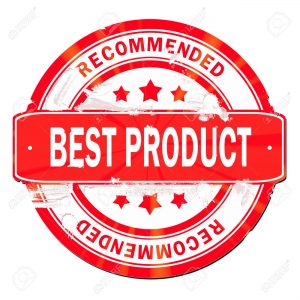What is an enzyme cleaner
Written by: Vinnie van Rooij
An enzyme cleaner is a strong organic cleaner that doesn’t use chemicals to clean, but is based on organic ingredients. The advantage should be that any residue is environmental-friendly and is not harmful for animal and/or children. Whether the products are more or less effective then their chemical counterparts is a topic of discussion.
Contents
Possible advantages for using an enzyme cleaner
Enzyme cleaners are based on biologic ingredients and materials, which is not to be confused with regular/commercial cleaning products, which are mostly based on chemical ingredients. The chemical products often work on the principle of dissolving the dirt by making the particles mix with the carrier (such as water). The enzyme counterpart of the products is based on the idea that bacterias and other types of enzymes eat away the dirt. The enzyme cleaner is supposed to be a flora and fauna friendly product. Some users claim the products are often more effective then the chemical version. Although commercial grade cleaners can be made at home with reasonably simple ingredients, enzyme cleaners are not only easy to make but also use biologic material that would otherwise be thrown away. The quality and use of products such as enzyme cleaners has been a difficult topic, especially since several products are sold as enzyme cleaner, even though they are made from chemical ingredients.
Uses for an enzyme cleaner
Enzyme cleaners can be used for a large variety of jobs, just like their chemical counterparts. Enzyme cleaners are most know by consumers are a natural way to get rid of nasty odors, unwanted biological matter (such as the green spots you can have on fabric convertible roofs), or to clean material that might be used by children (kidseats). However, enzyme cleaners can generally also be used to clean grease, oil, wash fabric and clean windows. Whether these uses give the same results as when using the chemical versions of the product is a hot topic.
Make your own enzyme cleaner
It is not very difficult to make your own enzyme cleaner, the internet is filled with articles that describe the whole process. In general it is based on the fermentation of biological material and boosting the growth of the bacteria that is formed. The whole process can take several months to complete at home. The materials that are used are not dangerous and the end product should not be dangerous for living animals. However, it is still advised to keep it far away from animals, children and to mark it clearly to prevent accidental consumption. The end product should be usefull for several different types of cleaning.
Commercial enzyme cleaners
Several different manufacturers offer products that claim to be enzyme cleaners. Although these generally work to a degree, it is not always clear whether these products are actually based on biological ingredients. Several manufacturer use chemical ingredients to create a product that gives a similar result, which makes them feel it should be called an enzyme cleaner. Although the name should refer to “A cleaner based on the use of enzymes”, some manufacturers think it means “a cleaning products that removes enzymes”. Not everybody agrees on the description, so different products are being put on the markt with different ingredients.
 Muc-Off is a manufacturer of various detailing products and is located in Poole, United Kingdom. The company has a very wide range of products that are not only aimed at automotive detailing. ...
Muc-Off is a manufacturer of various detailing products and is located in Poole, United Kingdom. The company has a very wide range of products that are not only aimed at automotive detailing. ... Finish Kare is a detailing products manufacturer that started out creating mold release products. The step into car wax for protective purposes was a small change that was easy enough to make. The brand now offers a small range of cleaning, polishing, protecting and perfecting surfaces for both car and marine detailing....
Finish Kare is a detailing products manufacturer that started out creating mold release products. The step into car wax for protective purposes was a small change that was easy enough to make. The brand now offers a small range of cleaning, polishing, protecting and perfecting surfaces for both car and marine detailing.... Westhill Trading Ltd is an English manufacturer of products used in detailing and valeting. Among others, Westhill Trading is the company behind Colourlock, known for cleaning, restoring and coloring leather surfaces. The company used to be called Westhill Properties Ltd up until Februari 2015....
Westhill Trading Ltd is an English manufacturer of products used in detailing and valeting. Among others, Westhill Trading is the company behind Colourlock, known for cleaning, restoring and coloring leather surfaces. The company used to be called Westhill Properties Ltd up until Februari 2015.... It is often asked on detailing fora and social media: "what is the best fabric protector or convertible roof protector". Off course there is a difference between certain products and brands, but it is important to know what you are asking. In this guide I will try to explain what the problem is with this question unless it is asked more in-depth....
It is often asked on detailing fora and social media: "what is the best fabric protector or convertible roof protector". Off course there is a difference between certain products and brands, but it is important to know what you are asking. In this guide I will try to explain what the problem is with this question unless it is asked more in-depth.... After washing a vehicle, the recommended step is to rinse the soap off. But not everybody actually knows why its recommended. Why not just dry off the soap and with it, the vehicle? Rinsing is one of the many steps of washing a car properly. And shouldn't be skipped, unless you are using a rinseless of waterless washing products....
After washing a vehicle, the recommended step is to rinse the soap off. But not everybody actually knows why its recommended. Why not just dry off the soap and with it, the vehicle? Rinsing is one of the many steps of washing a car properly. And shouldn't be skipped, unless you are using a rinseless of waterless washing products.... Cleaning a surface is not always easy. The product itself needs to be able to remove the product, but there should also be a safe method to remove the soap-dirt mixture. The cleaning pie gives insight in the factors that play a role in cleaning....
Cleaning a surface is not always easy. The product itself needs to be able to remove the product, but there should also be a safe method to remove the soap-dirt mixture. The cleaning pie gives insight in the factors that play a role in cleaning....







[…] out any sickness, don’t worry about it too much. It’s recommended you always keep an enzyme-based cleaner so you can properly clean your living room. It will kill any odor that might get your pets to make […]
[…] all, enzymes are the same thing. What is an enzyme cleaner? Enzyme cleaners are a group of products that can help remove odors and stains differently. Enzymes […]
[…] Are you tired of dealing with pet messes in your home? Say goodbye to stains and odors with the ultimate secret weapon: enzyme cleaners! […]
[…] always use an enzymatic cleaner to get rid of pet smells. These odor neutralizer products are usually highly effective, easy to […]
[…] Cleaners: Available in most stores, enzyme cleaners attack and break down the proteins in urine to remove stains and […]
[…] Enzyme-based cleaners are designed to break down organic stains, including mold, and are safe to use on most fabrics. […]